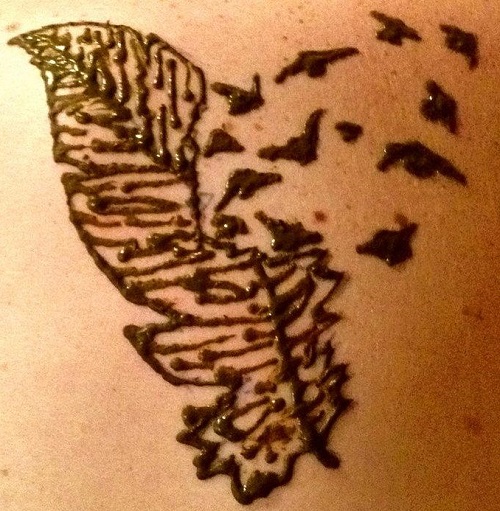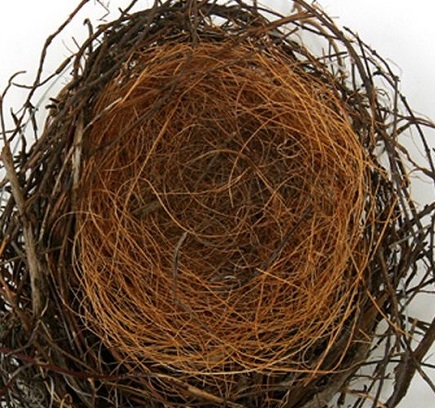FWP:
For background see S. R. Faruqi's choices. This verse is NOT one of his choices; I thought it was interesting and have added it myself. For more on Ghalib's unpublished verses, see the discussion in {4,8x}.
On henna, see {18,4}. Henna is a dark greenish-brown when newly applied (as in the image below), then dries to a red color that eventually pales as it fades away. As the commentators point out, the fading color can be said to 'fly away' the way a bird flies away. Or, of course, the way the beloved's initially flirtatious kindness and favor gradually pale into much colder treatment.
The addressee is enjoined to use and curate his memories so as to become a 'nest' for this bird of the color of henna. As Zamin notes, the unexpected appearance of the 'nest' creates a certain 'Ghalibness' in the verse. For the 'nest' offers twofold possibilities. Young birds are said to 'leave the nest' when they have grown, and many kinds of disturbance can induce adult birds too to abandon their former nests even in the middle of the egg-laying season-- not to speak of from one year to the next. Especially in the case of the bird of 'the color of henna' (which is guaranteed to fade away), it's easy to see the nest of such a bird as an image of desolation and abandonment.
But a nest is also, of course, a bird's only real home. Birds carefully build nests as part of their mating rituals; they constantly leave their nests to find food, only to hasten back to nurture their young. So to be the home 'nest' of a bird-- even a bird as evanescent as the color of henna-- can also conjure up images of loyalty, faithfulness, love. As Gyan Chand observes, once the bird of the color of henna has flown, its radiant red color will be possessed by the lover alone-- the one who has made his mind and memory into a shrine or 'nest' for the long-ago beauty and color of that bird. Along these lines, see the similar thought in {88,5x}.
Compare Mir's use of the 'bird of the color of henna': M{52,2}.


Asi:
Go on remembering the coquetries of the beloved's former kindness/courtesy. That kindness of coquetry was, so to speak, a bird of color that has now flown away. But in the case where you keep the kindness of coquetry in mind, then it's as if you have to become the nest of the bird of henna. In the tangles of thought, convolutions have overtaken the end of the thread of meaning.
== Asi, p. 264